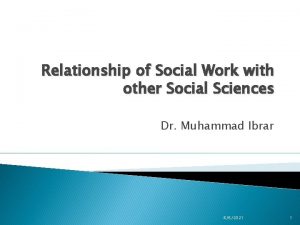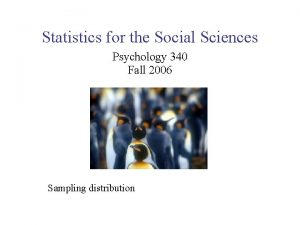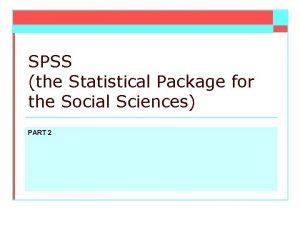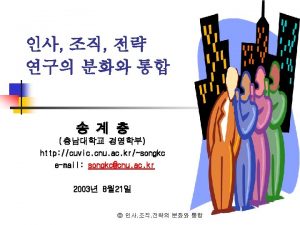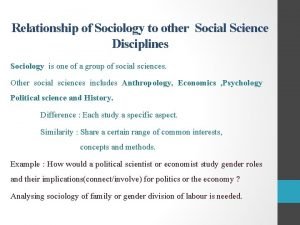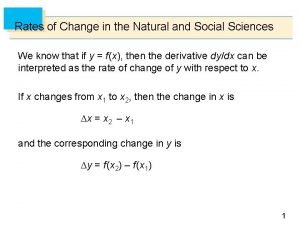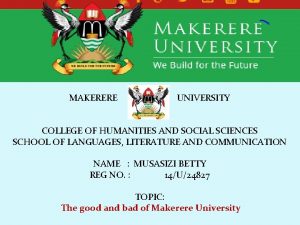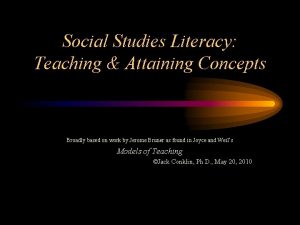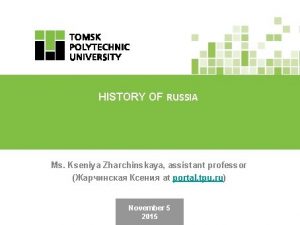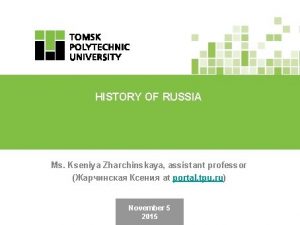Kseniya Tarakanovskaya Ph D student of social sciences











- Slides: 11

Kseniya Tarakanovskaya Ph. D student of social sciences WOMEN'S ACADEMIC CAREER OPPORTUNITIES: GENDER PERSPECTIVE Moscow, 2020

RATIONALE Career – a sequence of career stages, series of personal decisions, representing the biographical choice (Tartakovskaya & Vanke, 2016). • The model of a modern entrepreneurial university establishes a specific mode of work different from creative work associated with educational activity. • The gender gap based on awarded academic degrees, prestigious positions. • The woman appears, on the one hand, under the pressure of stressed academic work (supplementing by modern multitask and transformation sub-identities), on the other hand, under the pressure of secondary occupation, that implies the row of household and family responsibilities. • Implementation of the national strategy for women 2017 -2022*. * Order Of The Government Of The Russian Federation (March 8, 2017 № 410 -р) 2

GENDER GAP The gender gap based on share of postgraduates Female Male Total 47 53 >26 years 41 59 27 -29 years 52 48 30 -34 years 55 45 35 -39 years 55 45 40+ 56 44 Distribution of the share of postgraduates by age groups (2017, %)* • Federal State Statistic Service Total (female and male): 93 523 3

GENDER GAP The gender gap based on share of doctoral students Female Male Total 46 54 >39 years 42 58 40 -49 years 56 44 50 -59 years 50 50 60+ 24 76 Distribution of the share of doctoral students by age groups (2017, %)* • Federal State Statistic Service Total (female and male): 1 059 4

THE RESEARCH METHODS method of the study Analysis of statistics Distribution of the teaching staff (HSE) at the age of 30 -40 years (data of the staff management) Online forum Focus. Vision) (Revelation, Duration: one day Female professors and researchers Age from 27 to 48 years old Parameters: age, children, marital status 5

ANALYSIS OF STATISTICS Total Male Female Assistant 8 4 4 Associate professor 325 177 148 Teacher (lecturer) 81 26 55 Professor 25 21 4 Senior teacher (lecturer) 95 33 62 Distribution of the teaching staff (HSE) at the age of 30 -40 years (2019) 6

ANALYSIS OF STATISTICS Male Female Doctor of Science Candidate of Sciences Doctor of Candidate Science of Sciences Assistant 0 0 Associate professor 3 118 1 123 Teacher (lecturer) 0 5 0 10 Professor 13 6 3 0 Senior teacher (lecturer) 0 6 0 29 Total 16 135 4 162 Distribution of the teaching staff (HSE) at the age of 30 -40 years (2019) 7

BARRIERS OF WOMEN’S ACADEMIC CAREER Multitasking • "Multitasking is difficult , because I teach students and do my own research. Time is not enough catastrophically" (32 years old, not married, no children) • "At the University where I work, there are very high requirements for teachers, both in terms of teaching and in terms of publications, at the same time, I try to do my job well, and it is always difficult" (27 years old, not married, no children) The conflict between "empty" and "real" time • "The most difficult thing is the constant pop-up of useless tasks ( for example, urgent alteration of educational programs according to the next new standard) that distract from more important and interesting things (research, articles, preparation of speeches)" (41 years old , married, no children) "Glass ceiling" • "If there are no restrictions on the professor /doctor, in my opinion, there are purely administrative highest hierarchy, mainly men move ( the rector's office and the like)" (41 years old , married, no children) 8

BARRIERS OF WOMEN’S ACADEMIC CAREER Gender imbalance • "If a woman has children, it is definitely more difficult (build a successful academic career). Because attending seminars, lectures, scientific events, conferences, where informal meetings often take place and agreements on joint projects are reached - all this takes time, very often in the evening, and you can 't (because the kindergarten is open until 19 -00, and you still have to get to it). If you need to go to a conference in another city/country for a few days, you have to coordinate these dates with your family, ask grandmothers to sit with children" (30 years old, married, have children) • "It's true, I have constantly encountered in my work that it is much easier for men to do what women have to prove and achieve with hard work, both emotional and physical" (27 years old, unmarried, no children) Men don’t limit (stop) their careers • "I noticed in the families of my friends who are engaged in scientific activities that after the birth of a child or in some difficult stages of life, a woman devotes herself entirely to the child. The man at this time begins to work hard and performs in a short time a huge amount of work with the corresponding results. A mother can 't say to a sick baby, " Hold on!" and go to a conference or leave to write a dissertation. And dad can. Although I am a doctor of science, I know hard to raise children" (41 years old , married, has children) The postponement of births • ". . . I have not decided on childbearing yet, because I do not feel sufficient financial independence and stability on the career ladder" (32 years old, unmarried, no children) • "If you return to work in 2 -3 -4 years after the birth of a child/children, a lot can change: the rules of the game, the team, and everyone expects you to work at the same pace, you will immediately need to find new projects, new ideas for articles" (30 years old, married, 9

KEY FINDINGS Gender-role academic forces are not balanced: there are more men among doctors of science and professors. Reforming the higher education system and integrating it into the logic of a competitive environment has created additional sources of stress and pressure on professors, especially on the female part, which is traditionally under a lot of pressure from household chores and caring for family members. Women talk about the advantages of men in achieving academic Olympus, which is reflected in the intra-university statistics of the distribution of faculty by the availability of academic degrees. Understanding the negative consequences of postponing births does not allow women to compete with men on an equal footing, forcing female professors to slow down their career pace for a certain time or to take risks by postponing reproductive plans under the pressure of fear of career breaks. 10

Phone. : +7 (913)4233906 ktarakanovskaya@hse. ru 11
 Aim of the lesson
Aim of the lesson Human science
Human science Relationship between social work and political science
Relationship between social work and political science Statistics for social sciences
Statistics for social sciences Statistical package for social sciences
Statistical package for social sciences Social science citation index journal list
Social science citation index journal list Sociology as social science
Sociology as social science Rates of change in the natural and social sciences
Rates of change in the natural and social sciences Natural science grade 6 term 2
Natural science grade 6 term 2 College of humanities and social sciences
College of humanities and social sciences Social sciences examples
Social sciences examples Social sciences examples
Social sciences examples


